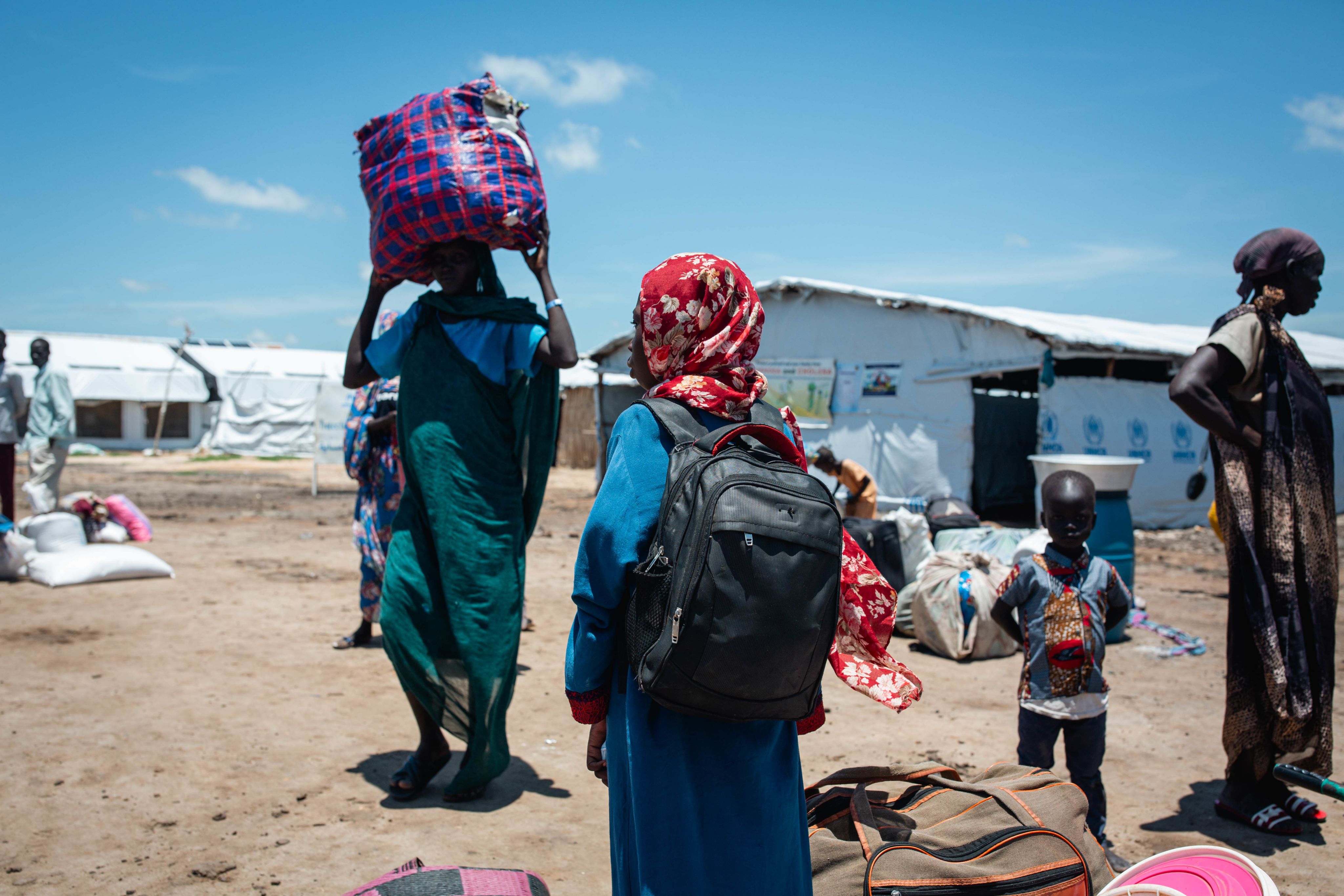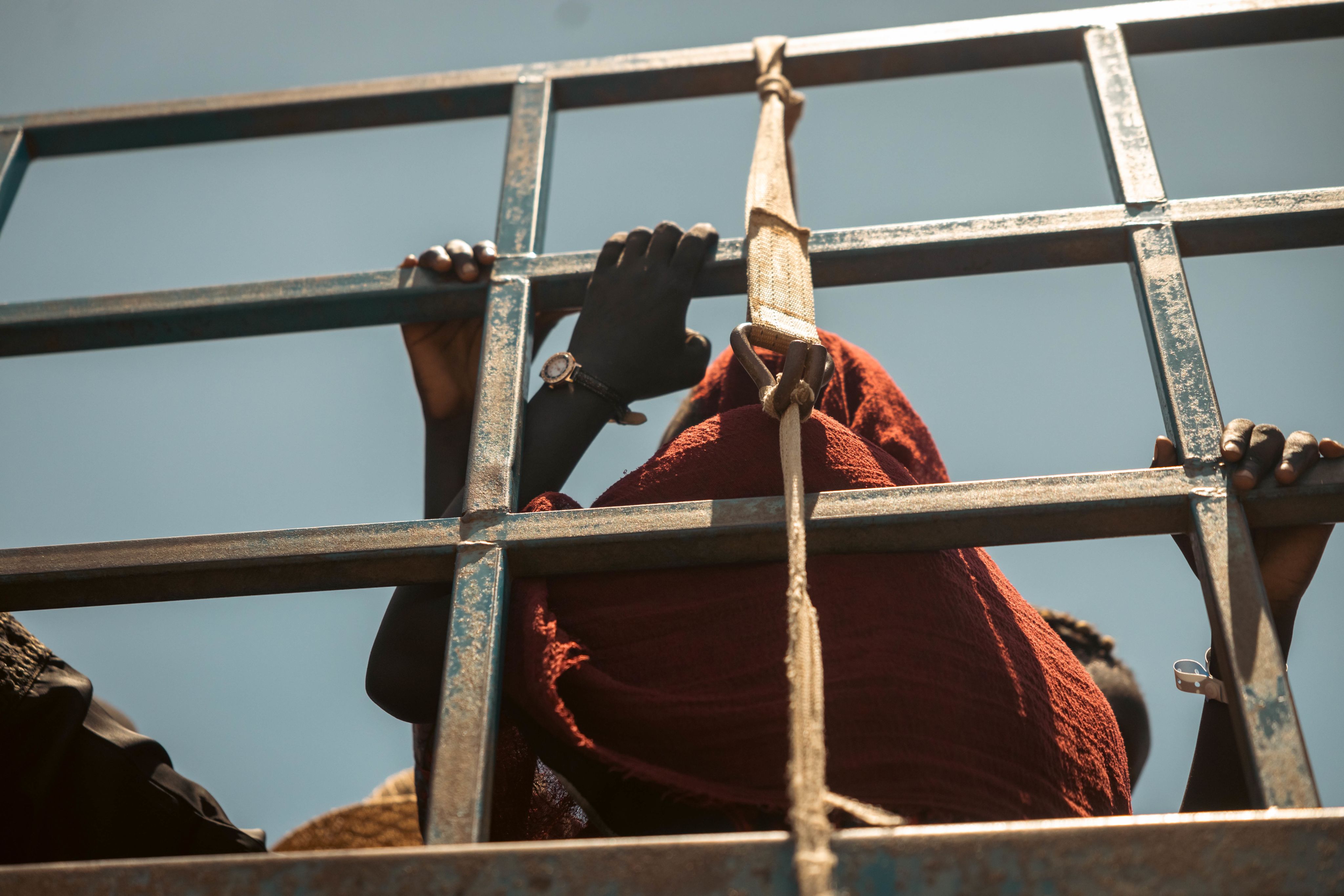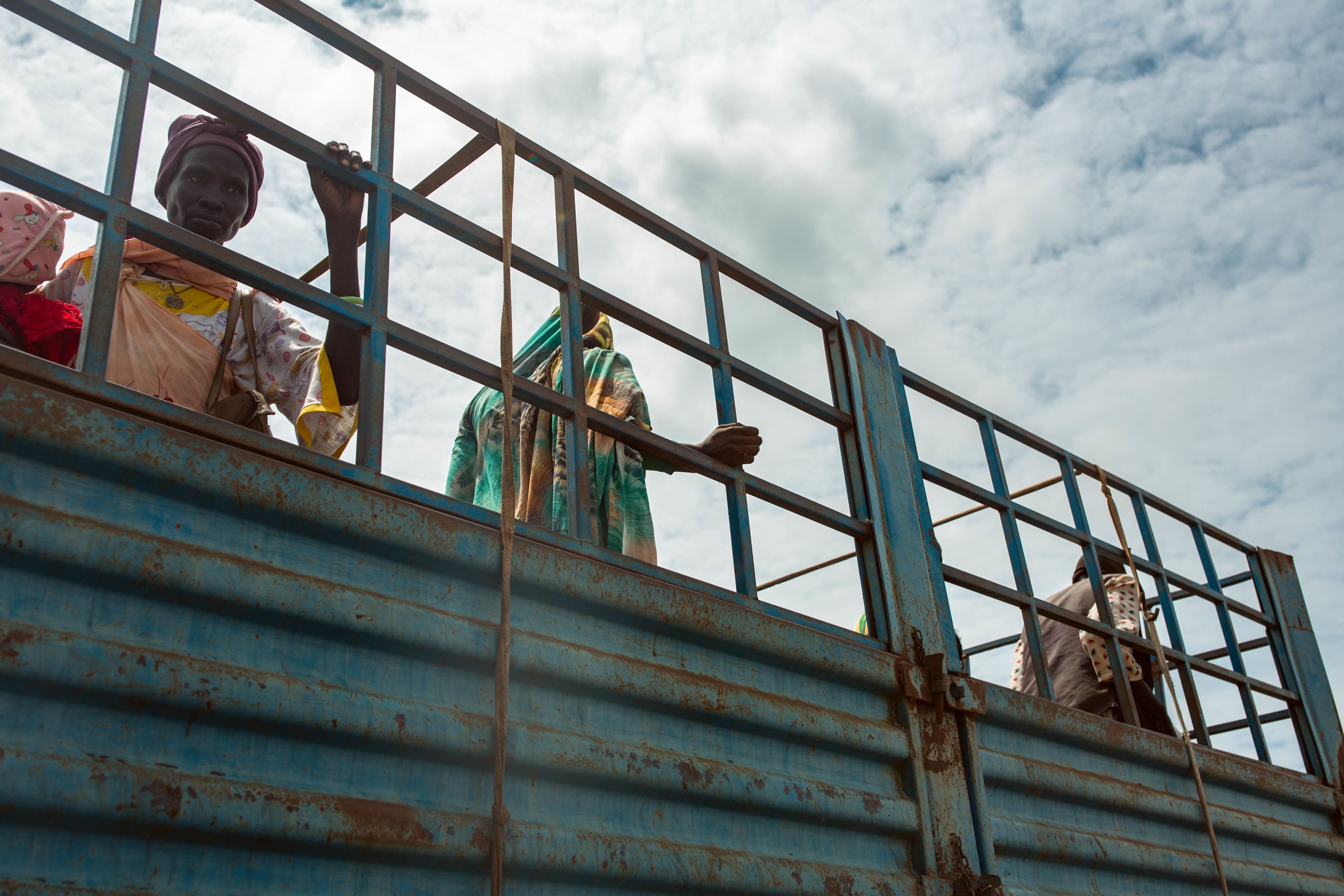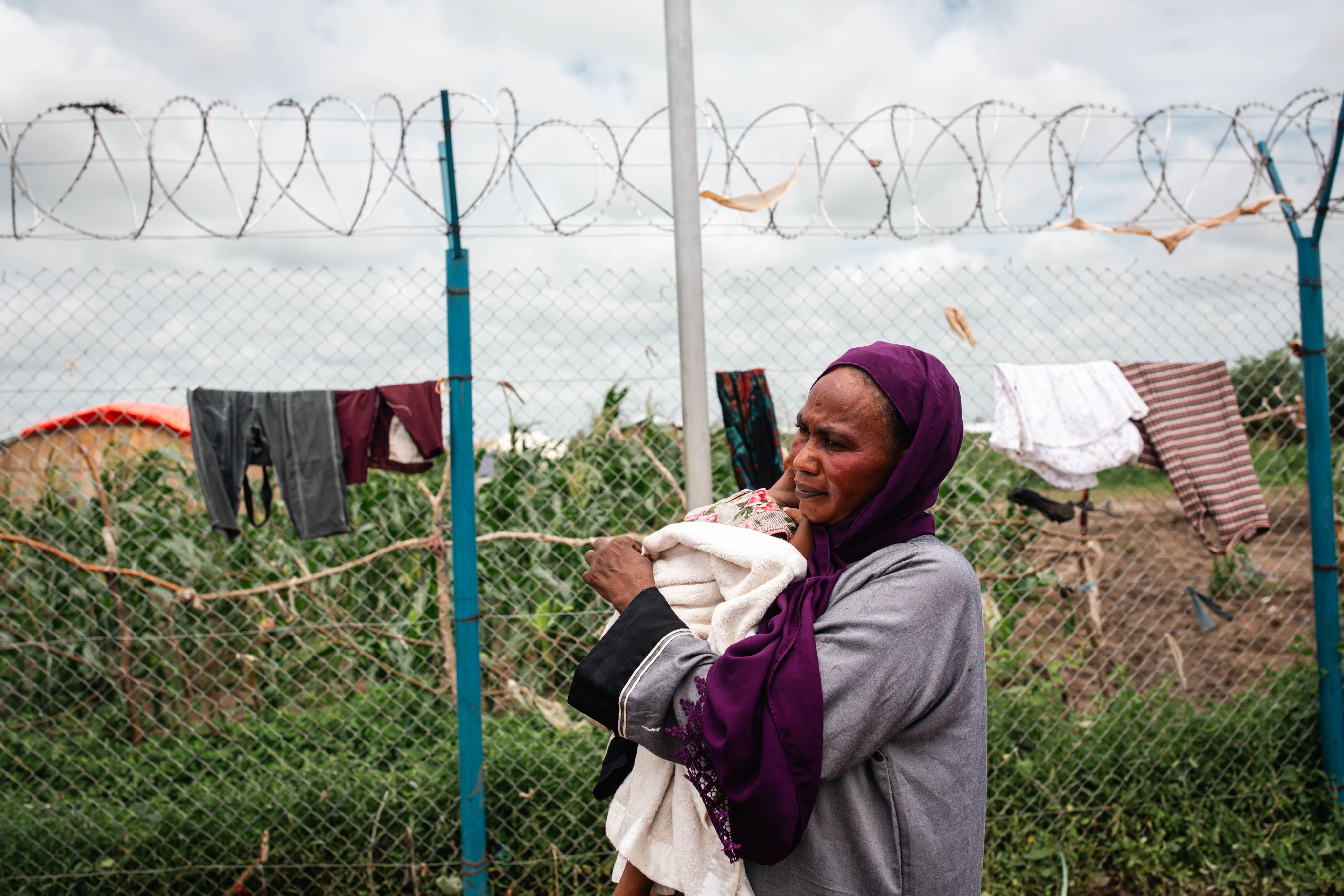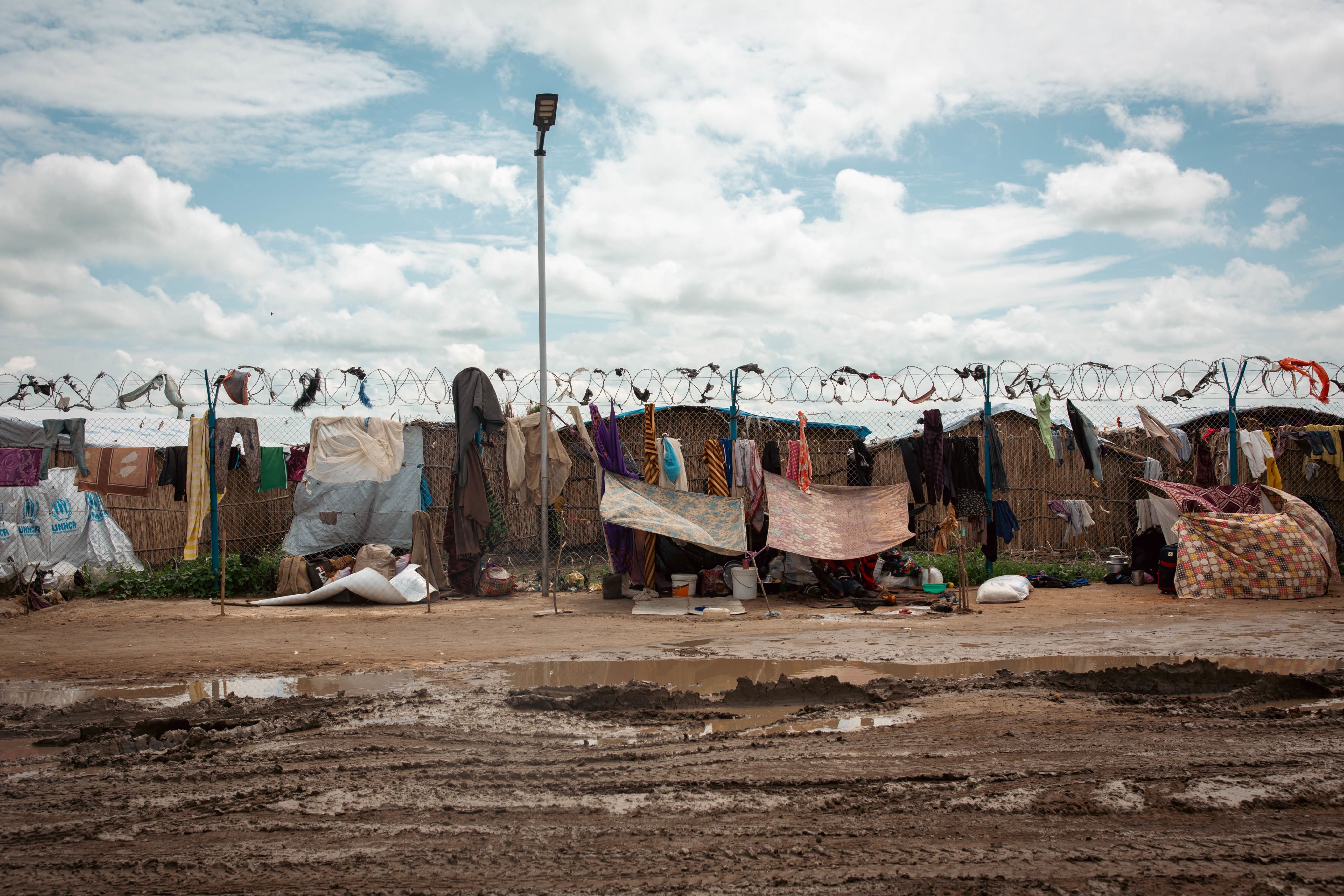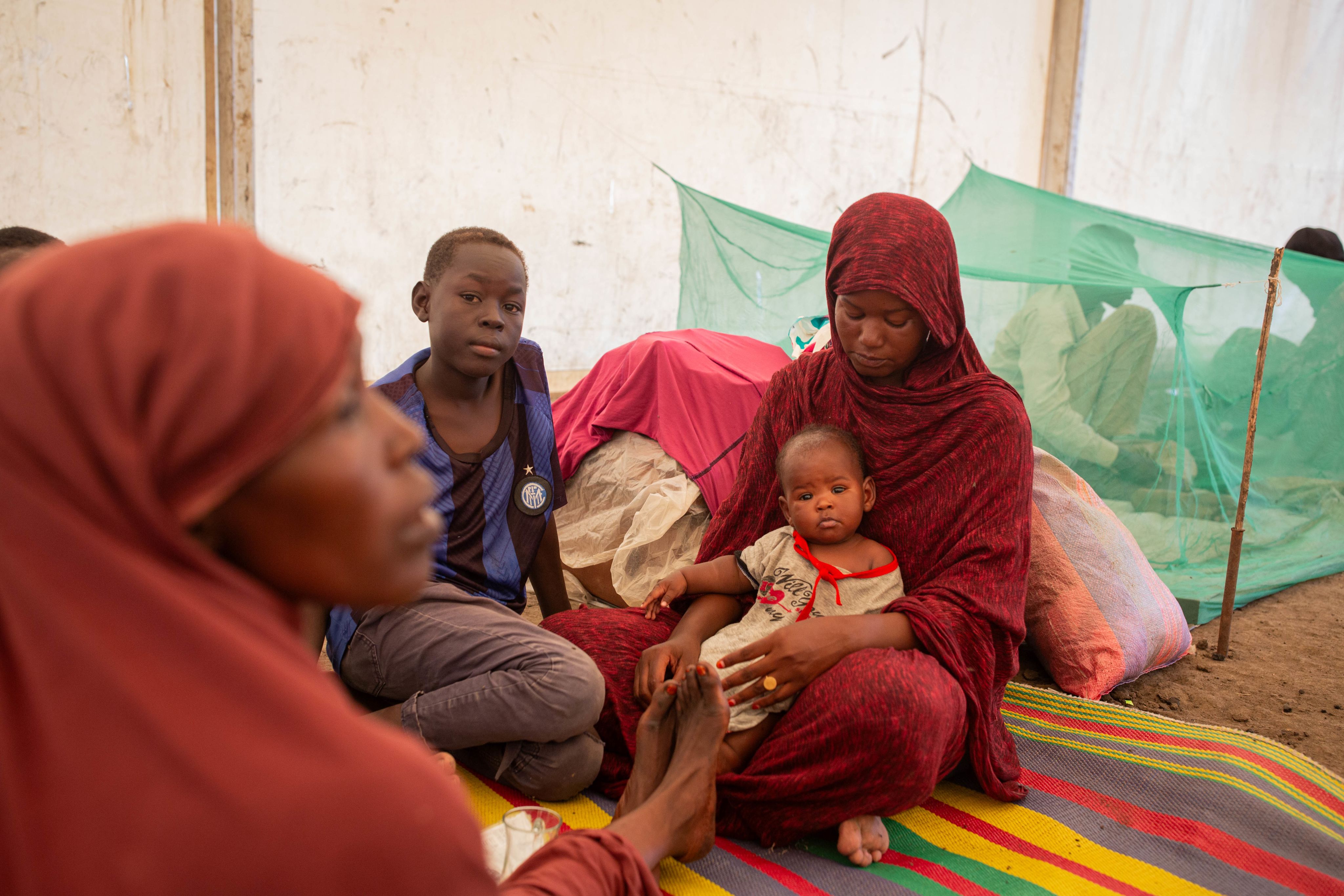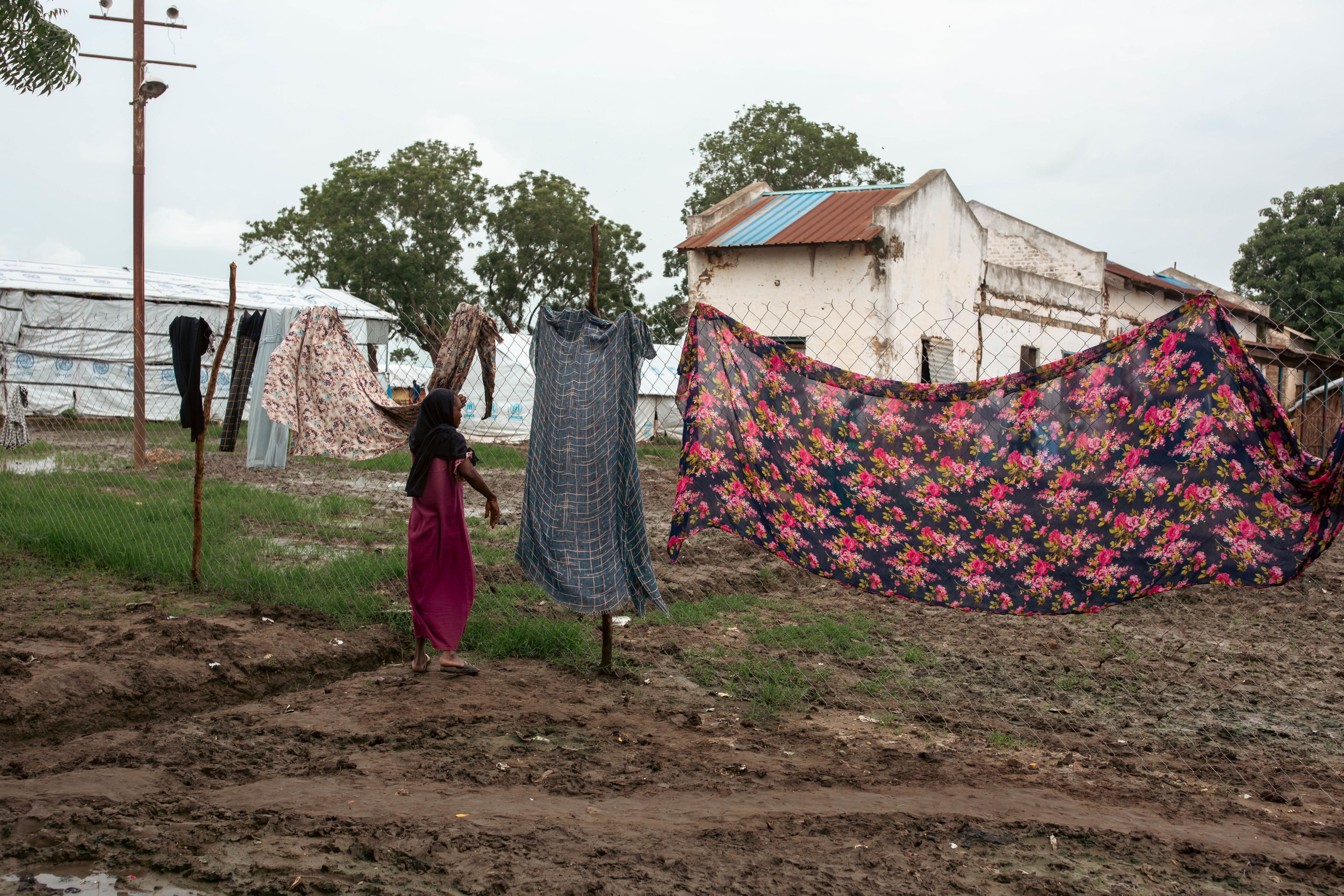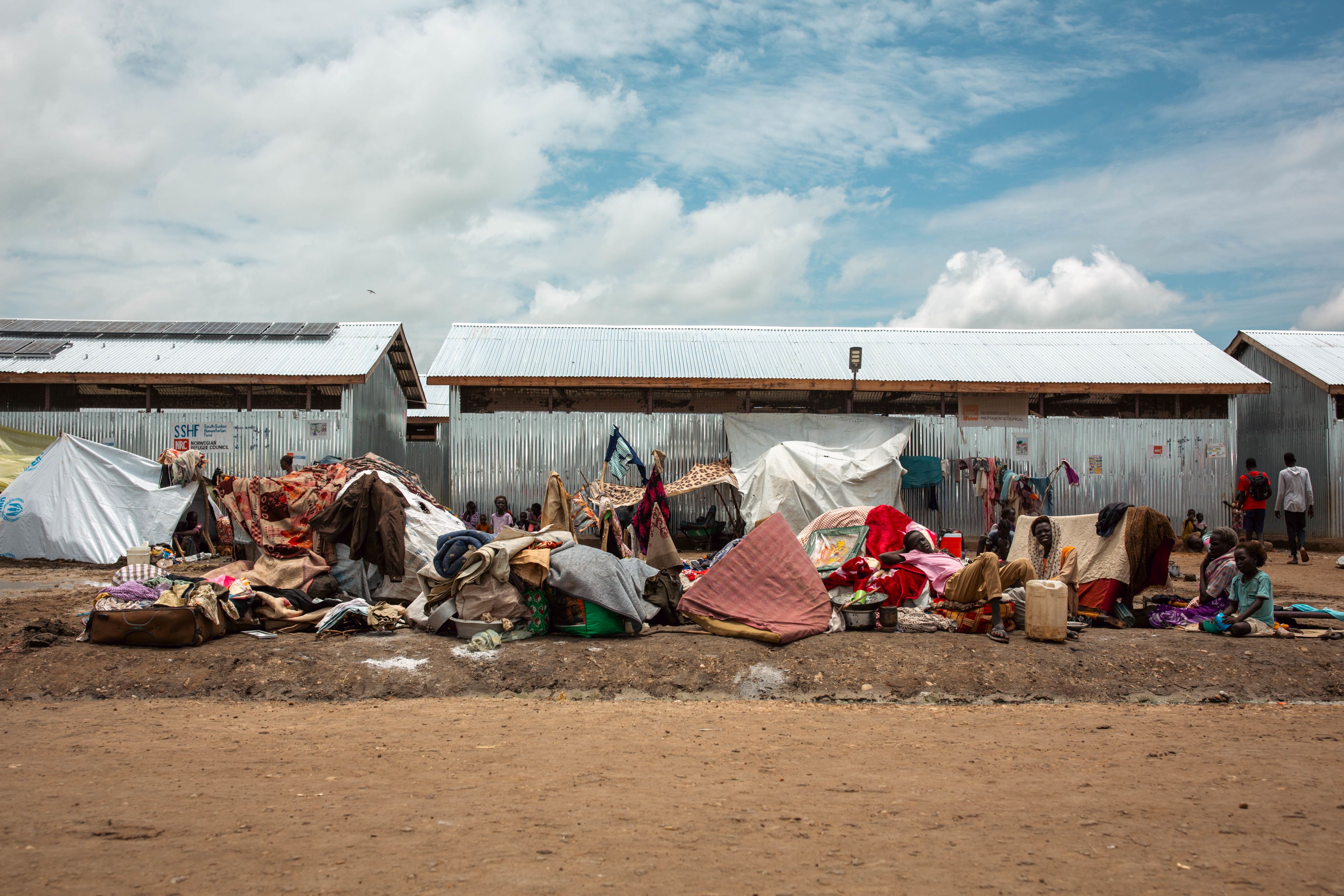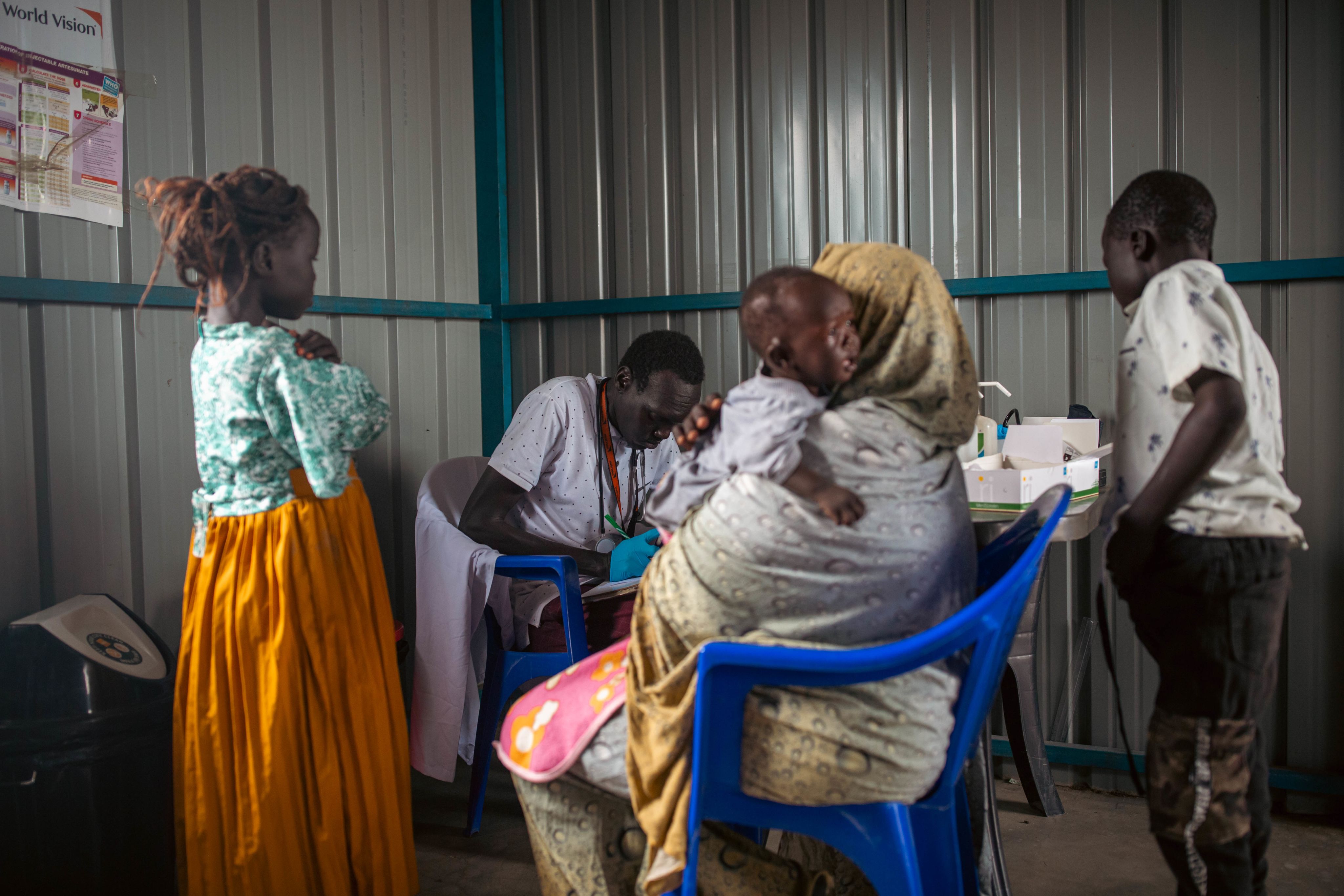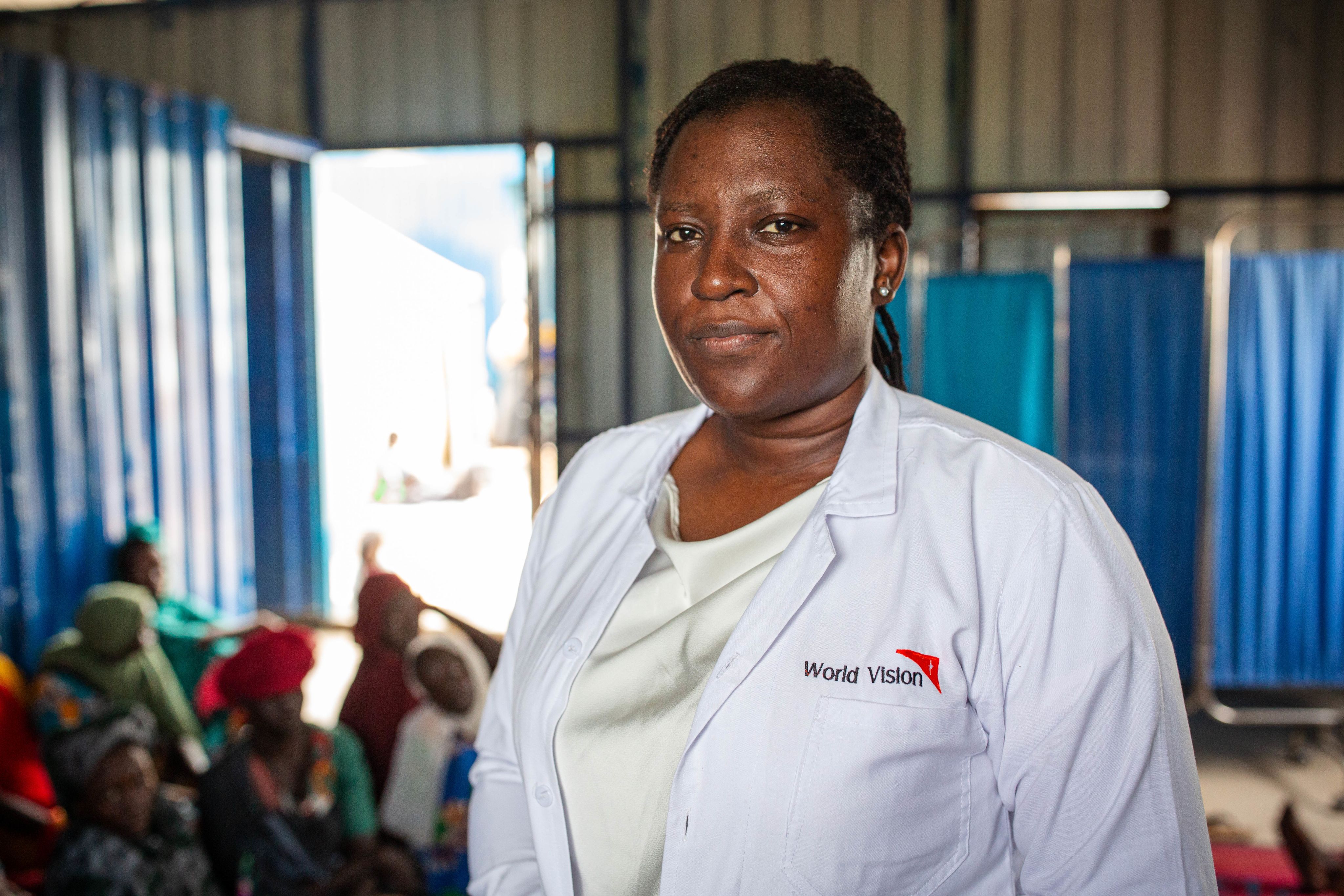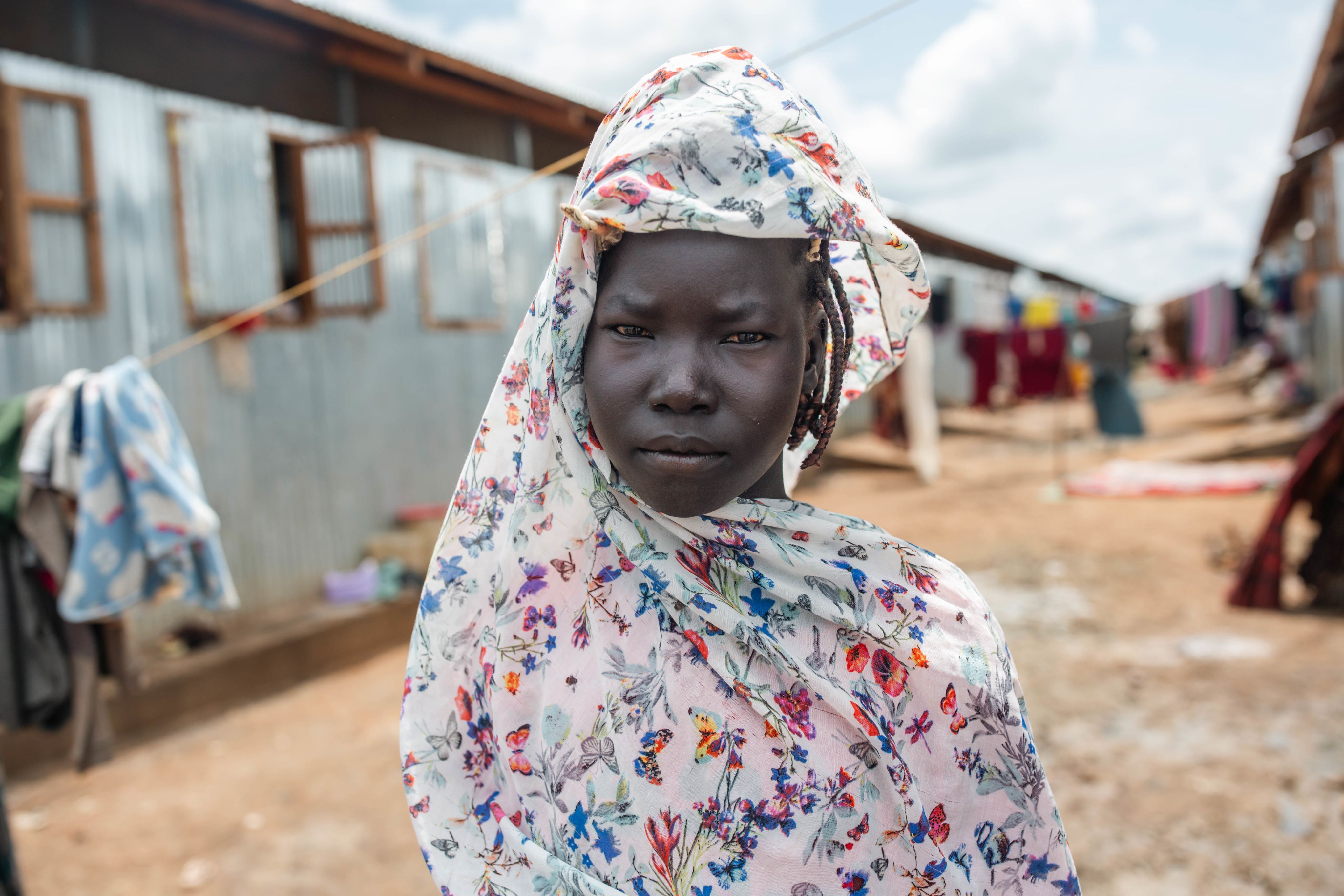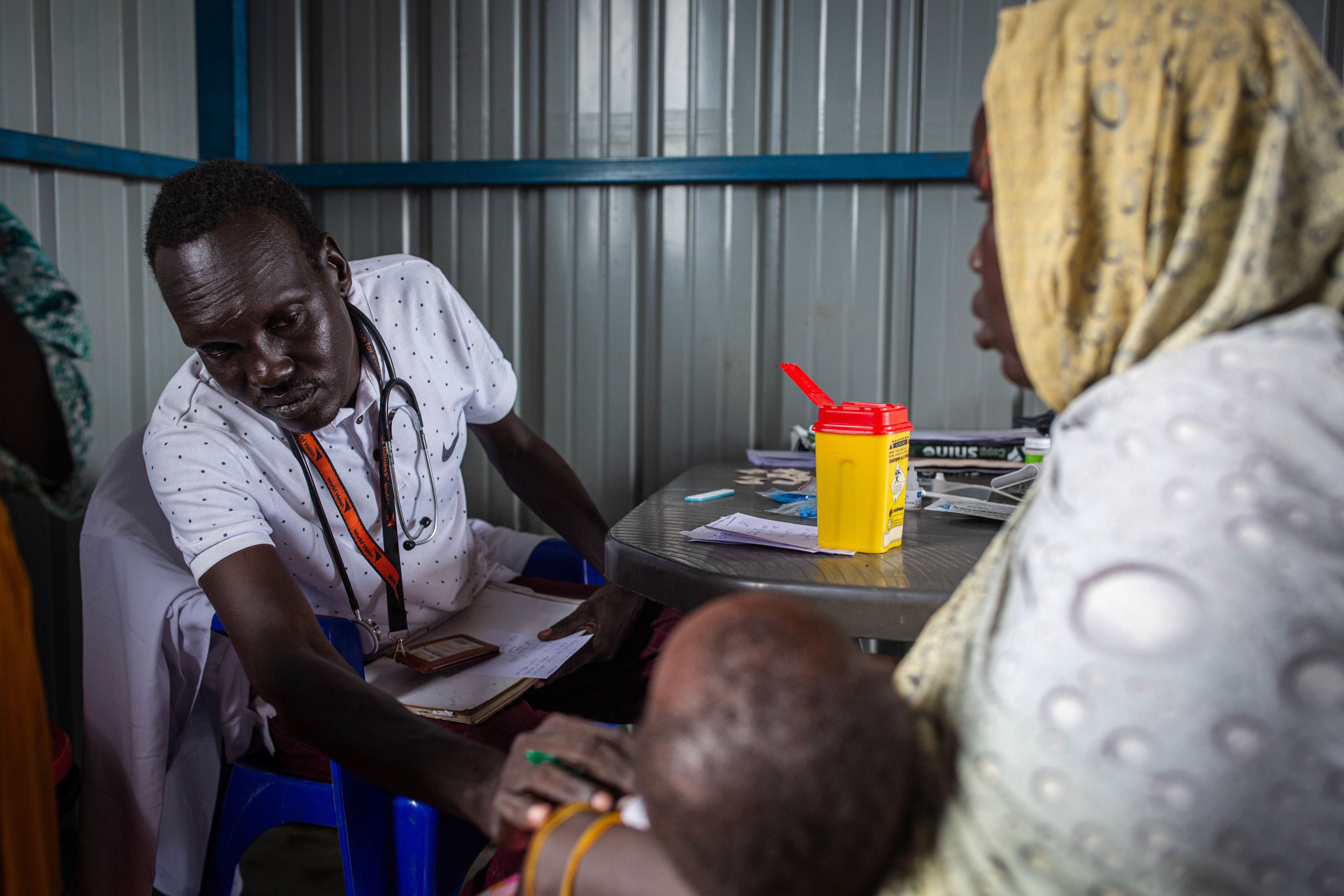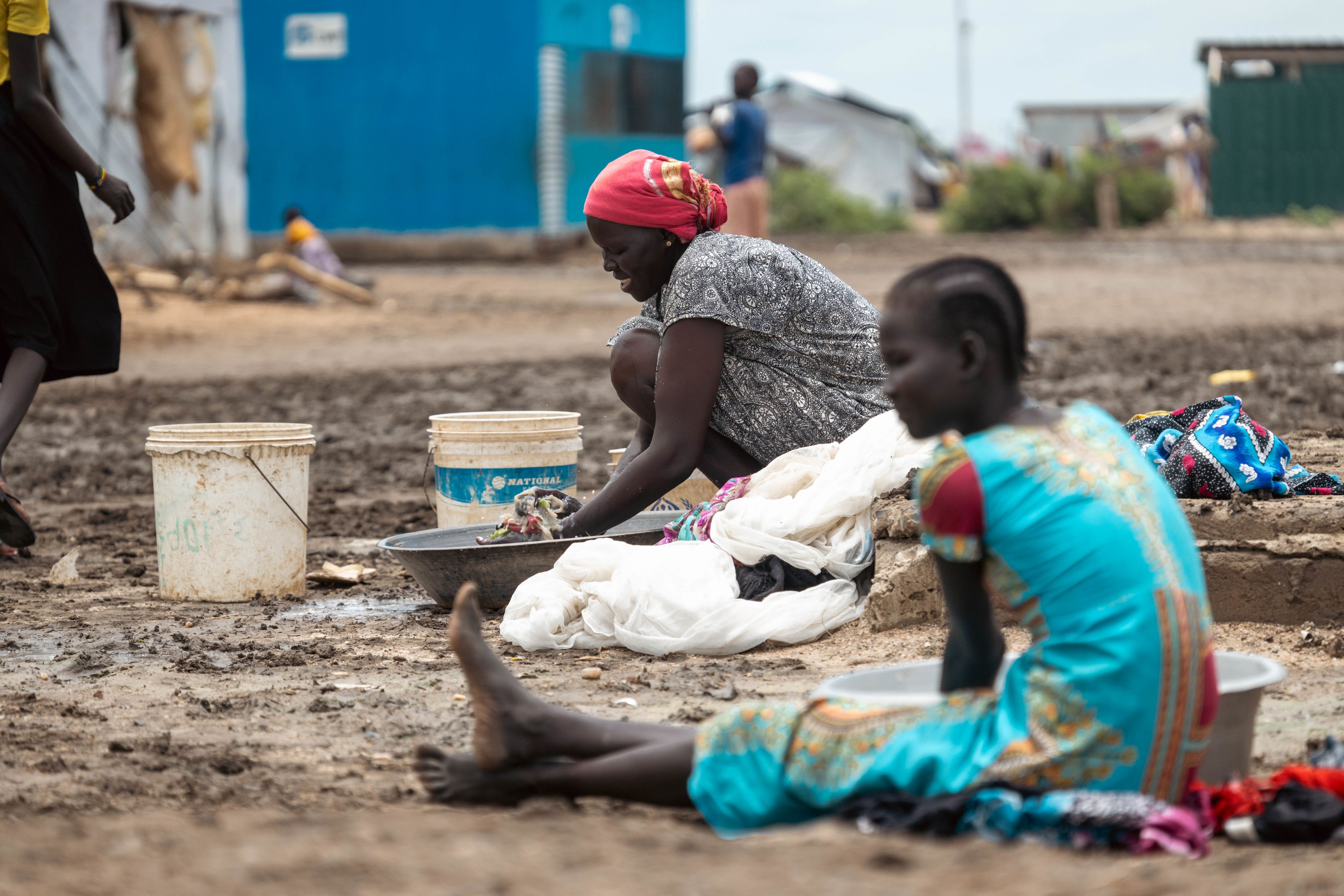South Sudan was already in crisis. Then Sudan’s conflict erupted.
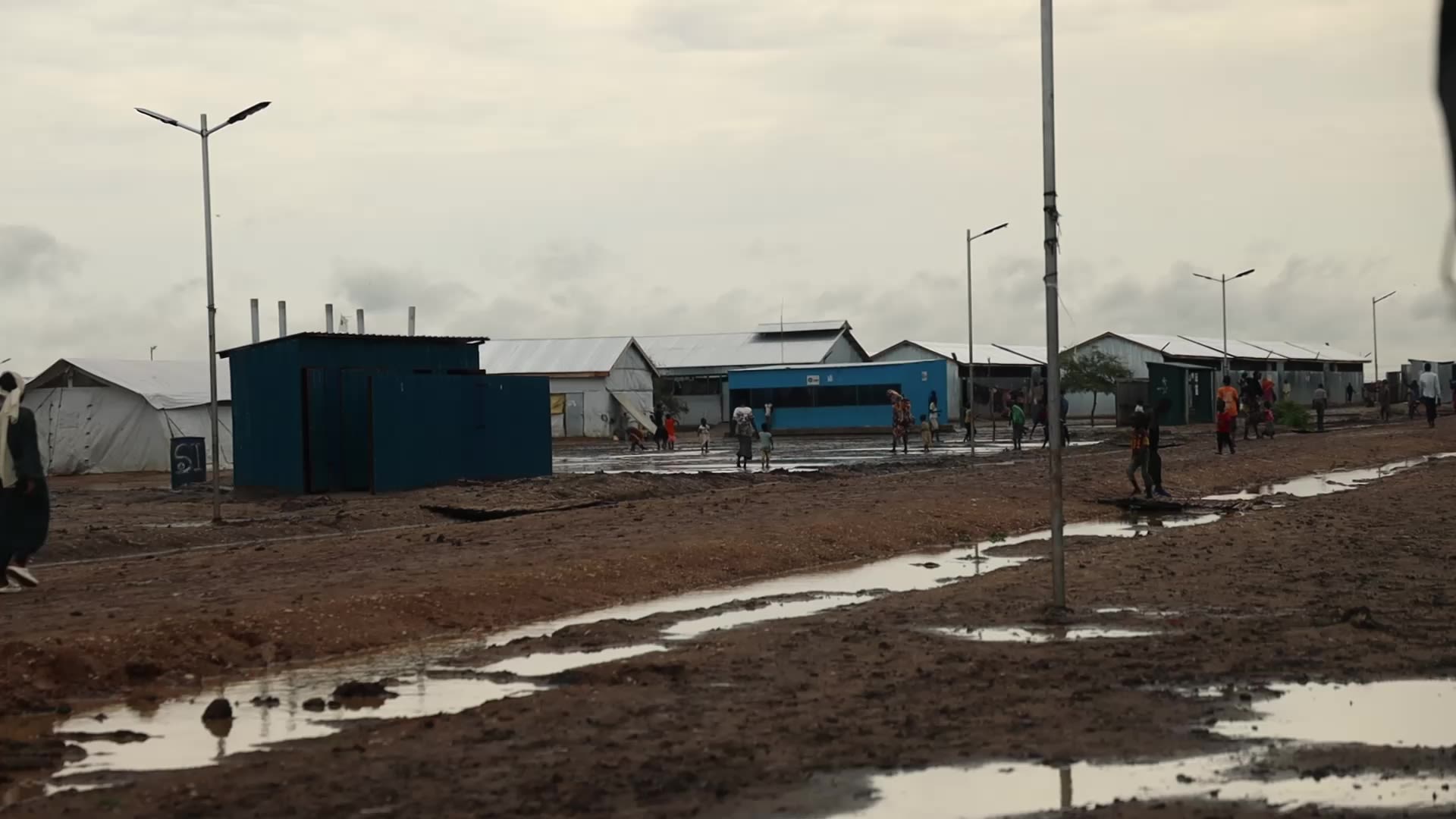
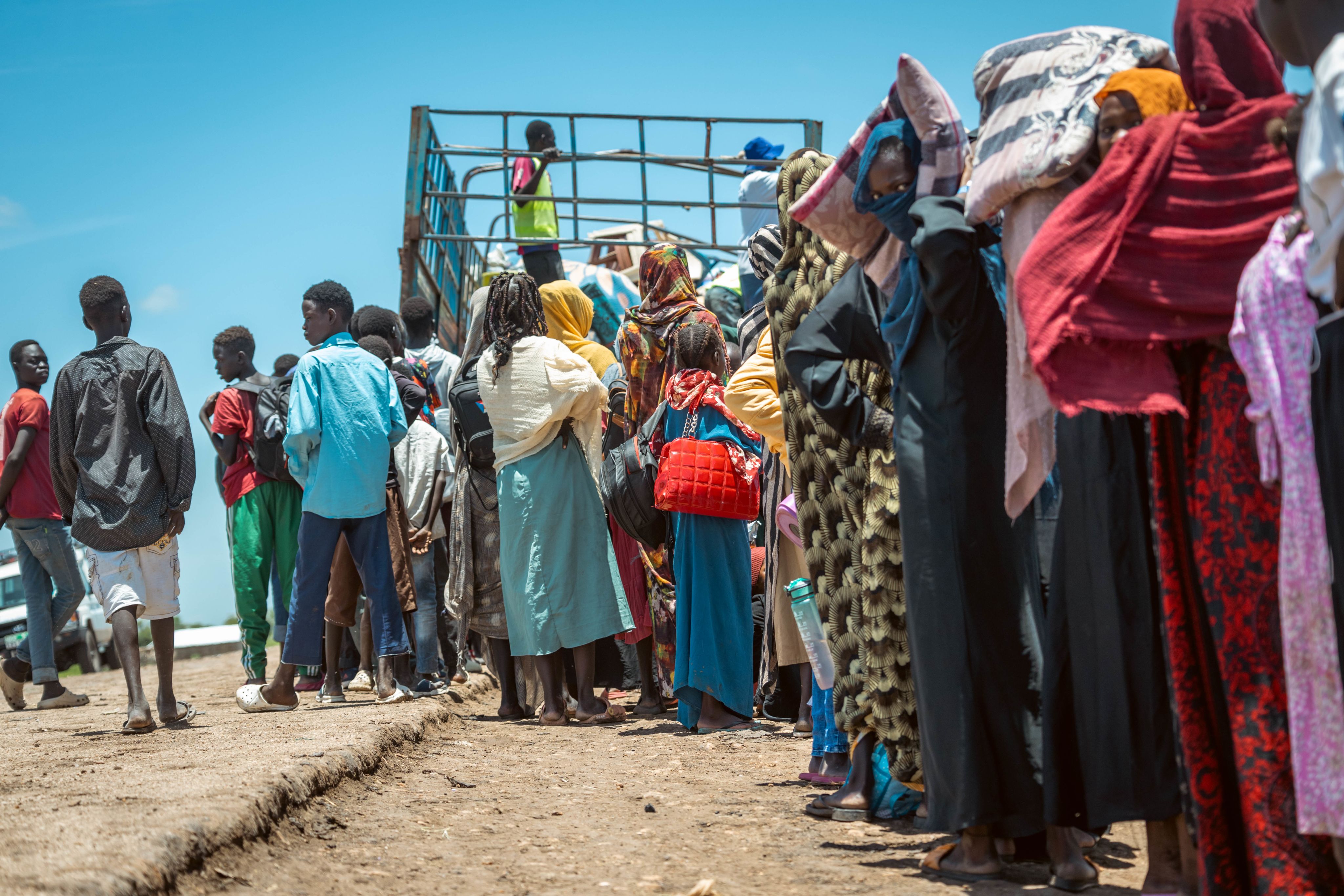
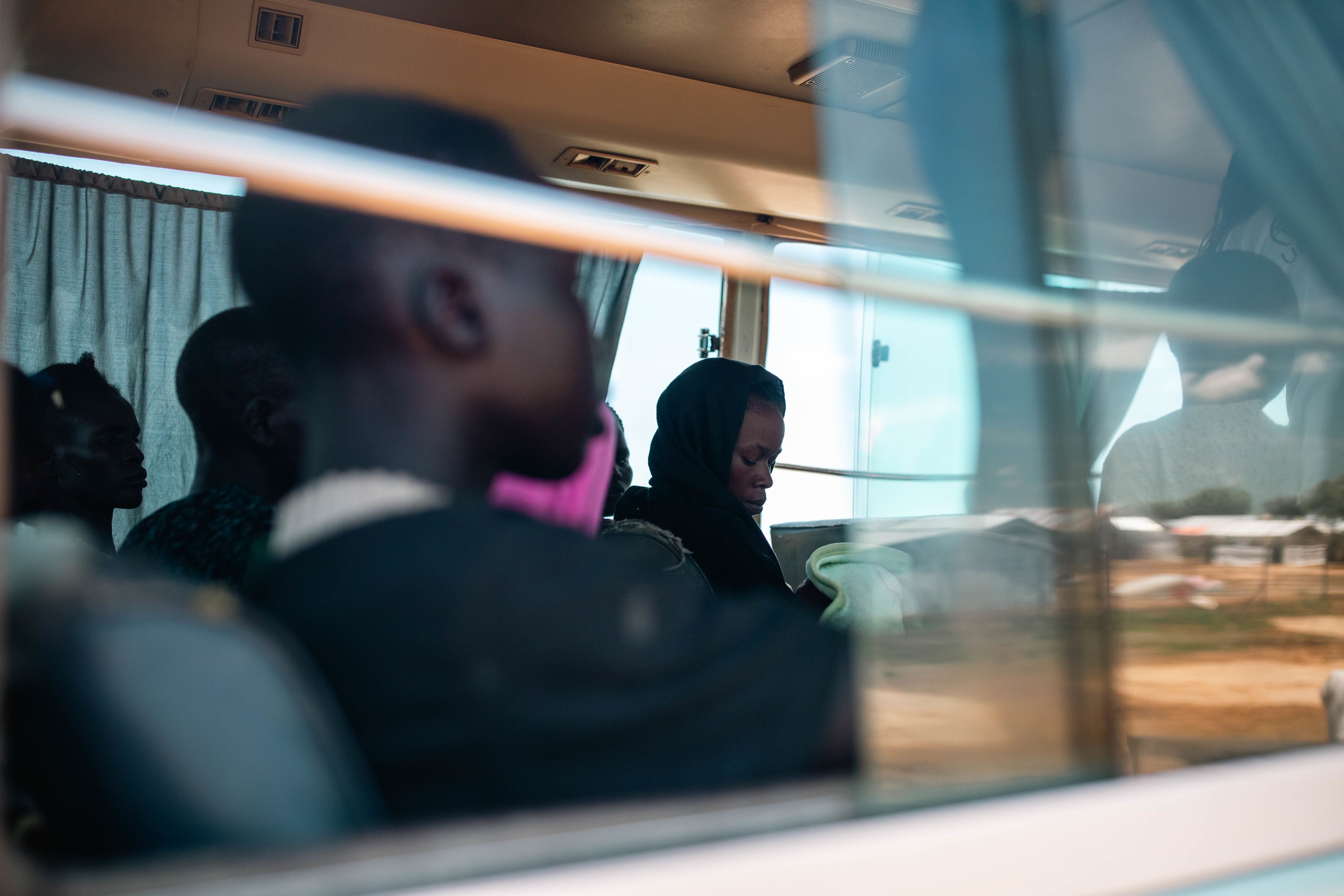
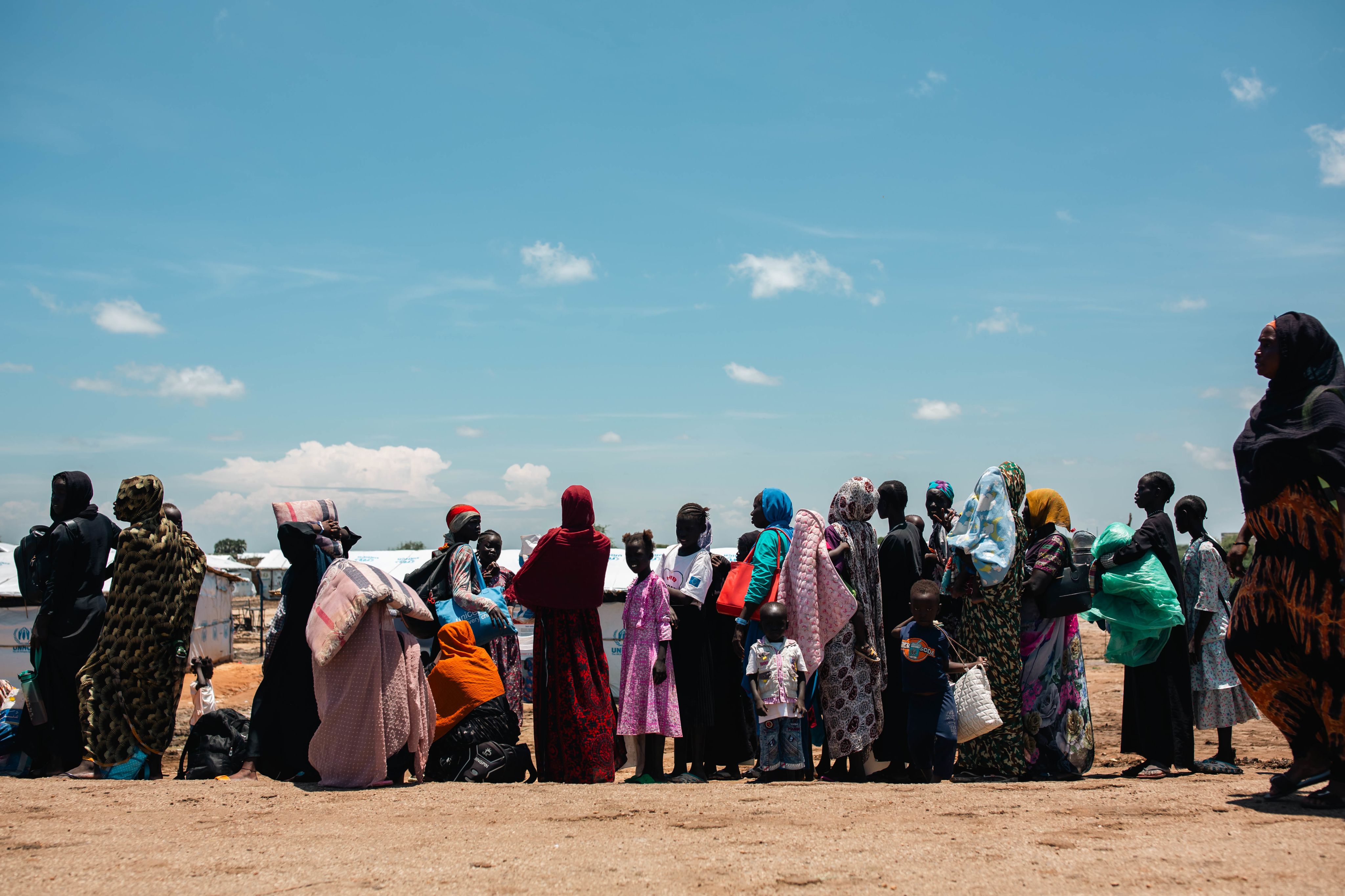
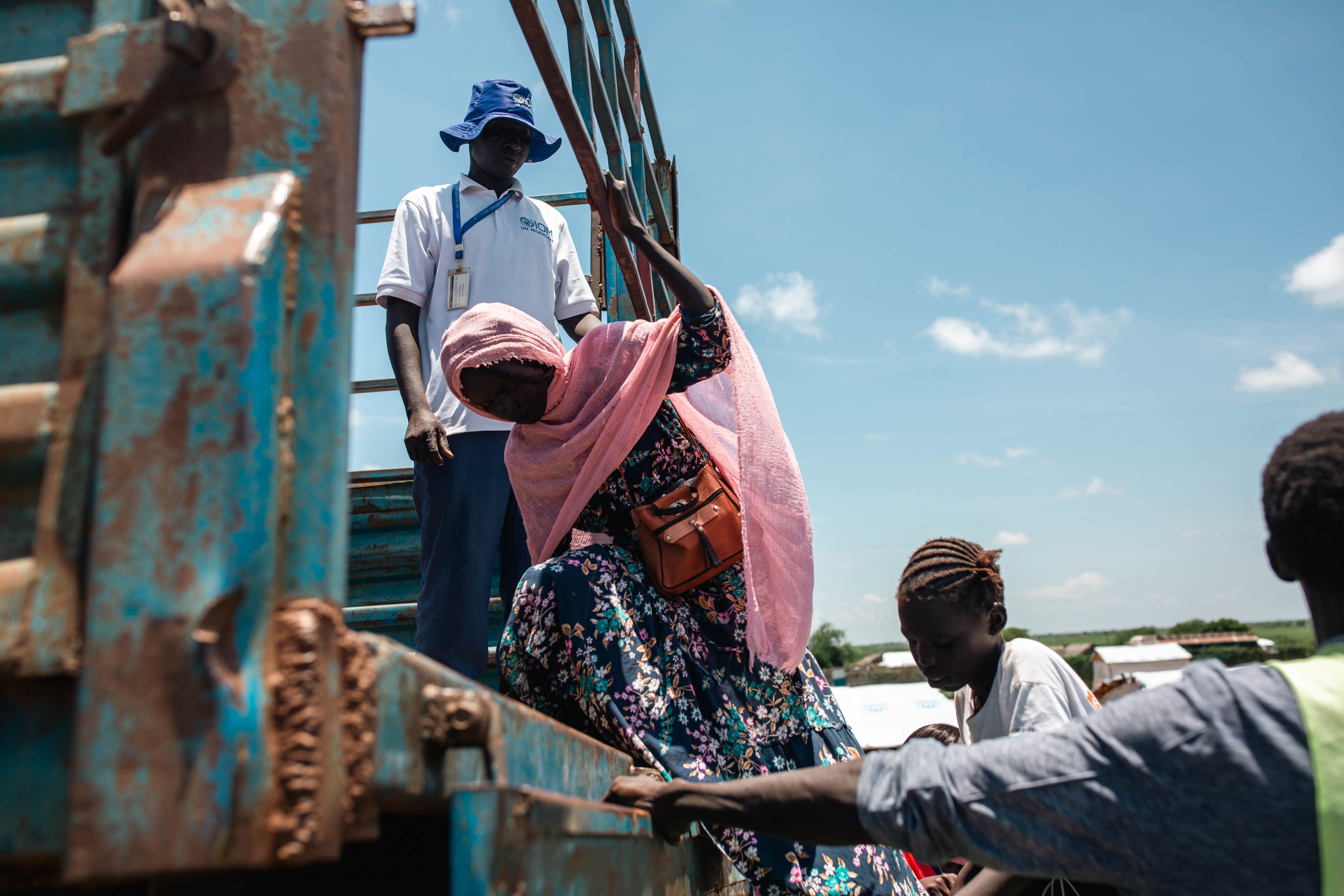
Under the blistering sun, desperate families wait patiently to climb onto a truck.
Nearby, small buses are already packed.
Some look relieved after weeks of exhausting travel.
Others are apprehensive about their next steps, now that they have finally arrived in South Sudan.
This is the latest wave of refugees and returnees, embarking on the next chapter of their lives having been uprooted by the intense conflict in Sudan.
One young woman says this is the first time in a long while she has felt safe.
“The situation there has gotten worse, that’s why we left” she says.
“Because of this war, it’s become very unstable.”
Since the conflict in Sudan began more than 16 months ago, more than 18,000 people have been killed according to the UN’s Independent International Fact-Finding Mission.
Tens of thousands more have been injured and millions face extreme hunger as Sudan grapples with unprecedented shortages of food.
The conflict has also sparked the world’s largest displacement crisis.
Eight million people are internally displaced within Sudan with more than half of those being children.
Two million people have crossed Sudan’s borders seeking safety.
Hundreds of thousands of those have come through the Joda border point in Upper Nile, travelling to South Sudan to seek refuge.
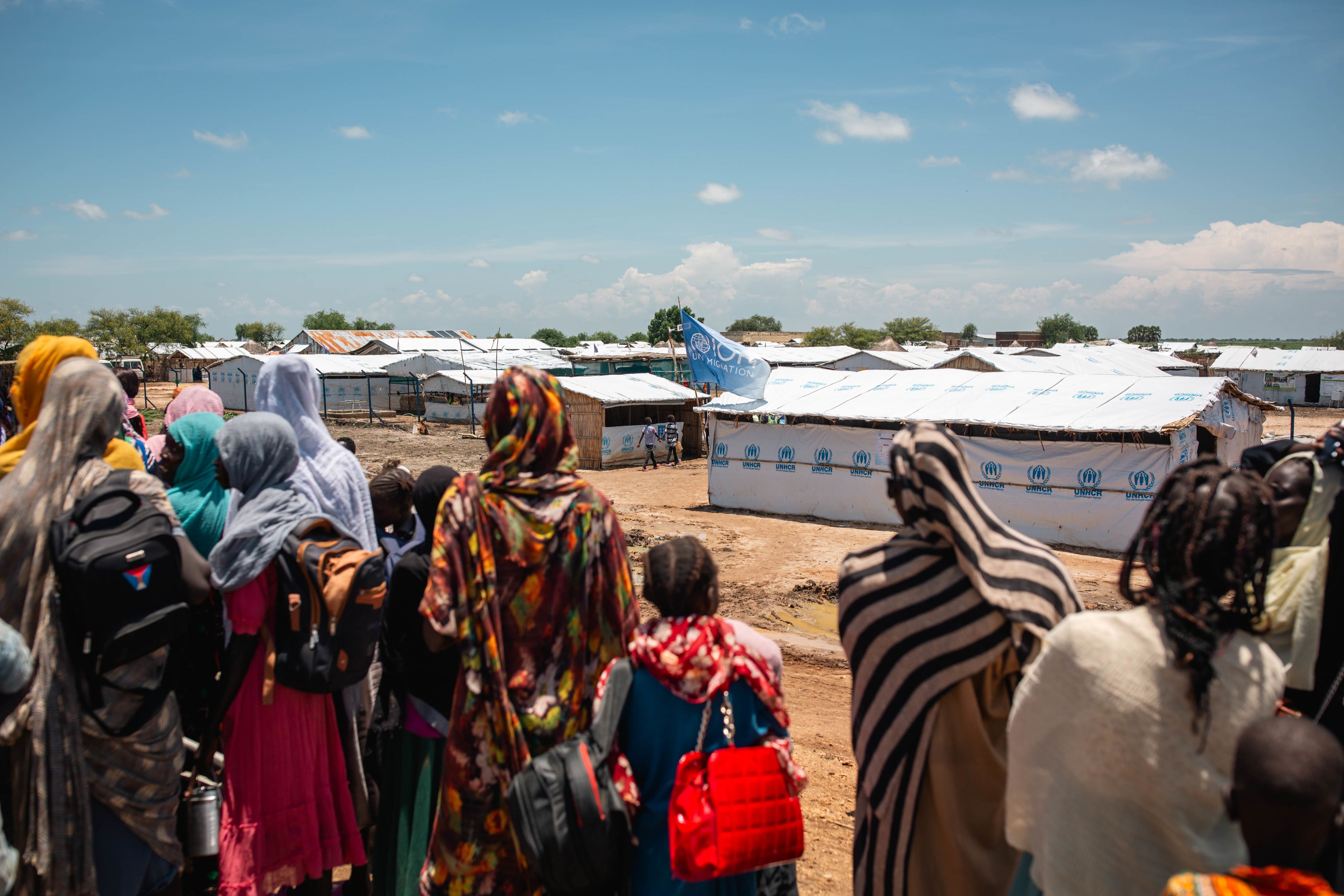
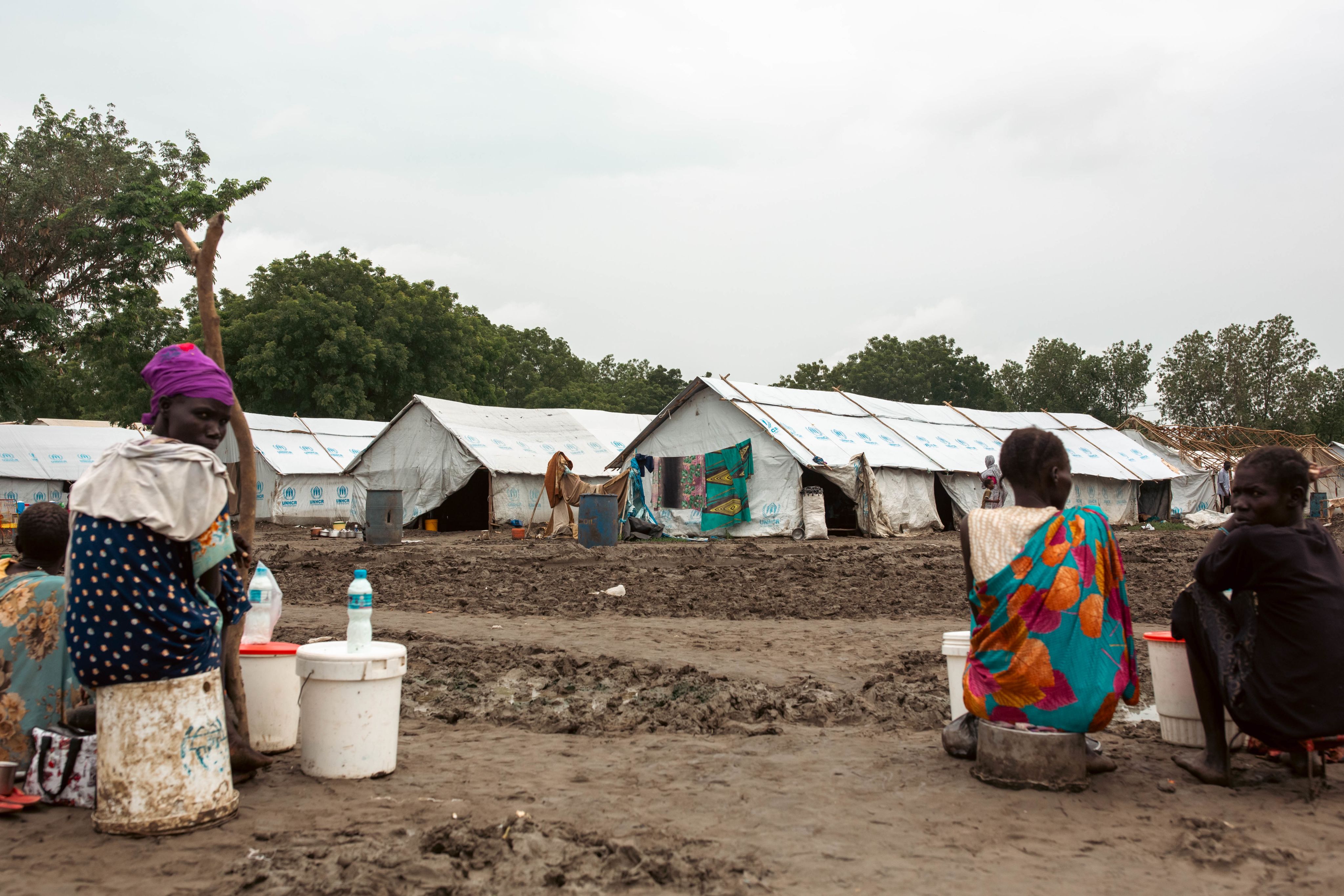
And while these families have crossed into the relative safety of South Sudan ...
... their hardship is far from over.
Before the Sudan crisis, South Sudan was already struggling with significant food availability and security issues.
According to the UN, nine million people, or three-quarters of South Sudan’s population, need humanitarian assistance.
These problems are now exacerbated by flooding and the staggering number of people pouring in across the border.
The Upper Nile state of South Sudan, among others, is now hosting a significant influx of refugee families, including hundreds of thousands of ‘returnees’.
Those are people who fled to Sudan, generally over the last decade during South Sudan’s own conflict, only now to return as violence in Sudan spiralled out of control.
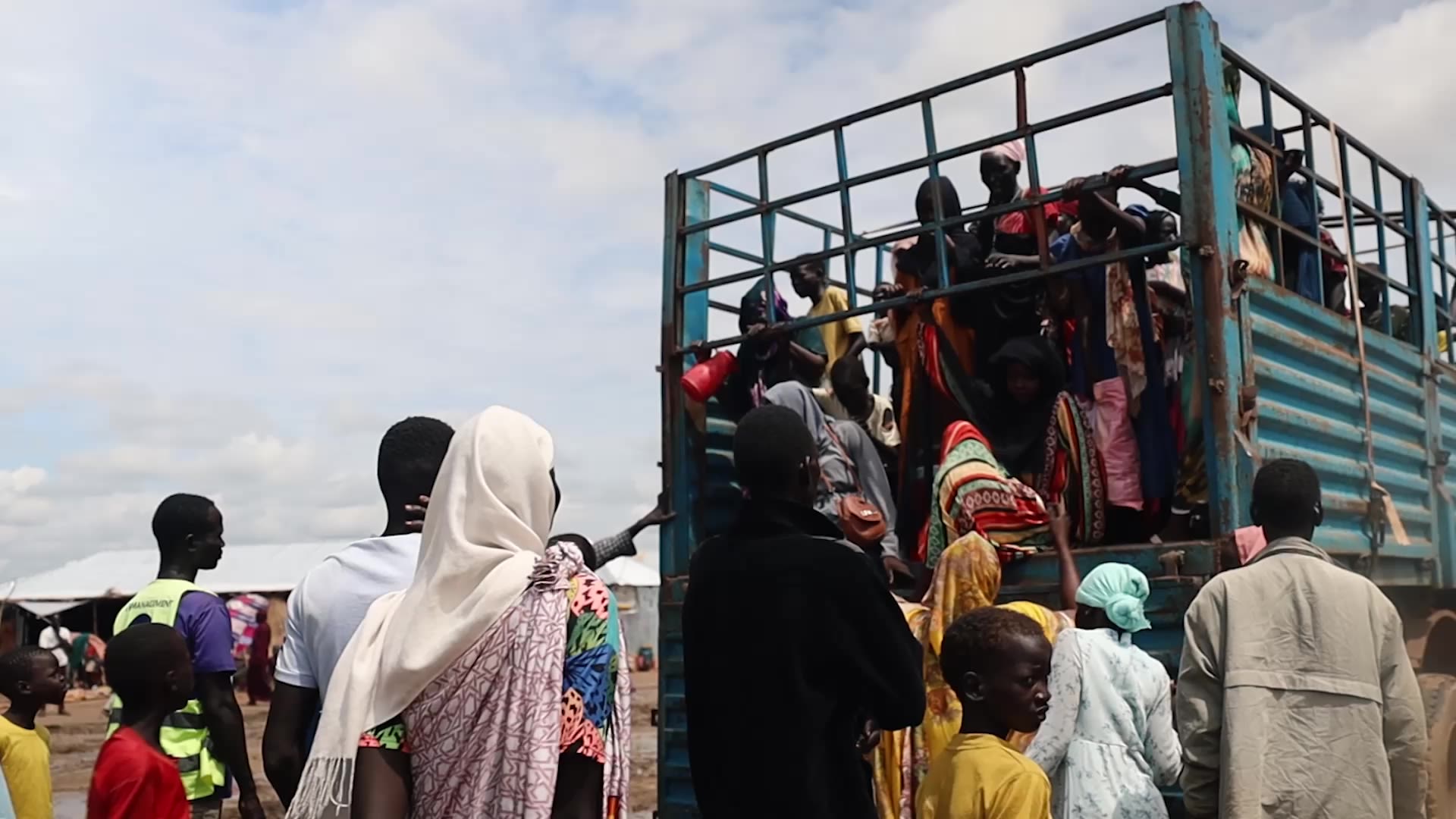

Each month, thousands of returnees and Sudanese refugees come through South Sudan’s transit centres, often spending weeks or months at a time at them before more permanent accommodation can be found.
Their stories of escape, survival, loss and the conditions in which they find themselves, are harrowing.
Sudanese refugee, Milfred, is one of thousands at the Renk Transit Centre, waiting to be sent to a refugee camp elsewhere in the country.
She said the conflict took her completely by surprise, when her home was raided.
“They began shooting … and everything was destroyed,” she said.
“We had to flee and we left everything behind.”
She, her children and her niece are sharing a temporary shelter, sleeping by a fence underneath cloth propped up by sticks.
Her husband still hasn’t been able to cross the border and join her in the camp.
“My family, they’re all in different directions. I’ve reached here and we’re trying little by little to reunite.”
Marwa, another Sudanese refugee, was recently widowed by the conflict in Sudan.
“Some of my family members were displaced in Sudan during the war and I don’t know where they are right now, whether they are dead or alive,” she said.
“It’s messing with my wellbeing, I hope God protects them wherever they are.”
With the ‘rainy season’ underway in Upper Nile, these camps are covered in mud and become incredibly difficult to live in.
“Shelter is a problem since we left everything back home and we don’t have money to buy any,” Marwa said.
“We don’t have beddings like bedsheets, mattresses and when it rains the tent floods.”
“The washrooms here are extremely dirty, with long lines waiting to use the latrines and bathrooms.”
“Children, the elderly and people with disabilities use the same washrooms which are very dirty, we’re worried about the health risks of using them.
Heavy rains and flooding in Sudan are also driving displacement.
Across the region this also heightens the risk of disease outbreaks, like cholera.
While many are hosted in large shelters built at these camps, overcrowding at the Renk Transit Centre has forced many to sleep under makeshift tents made out of whatever is to hand.
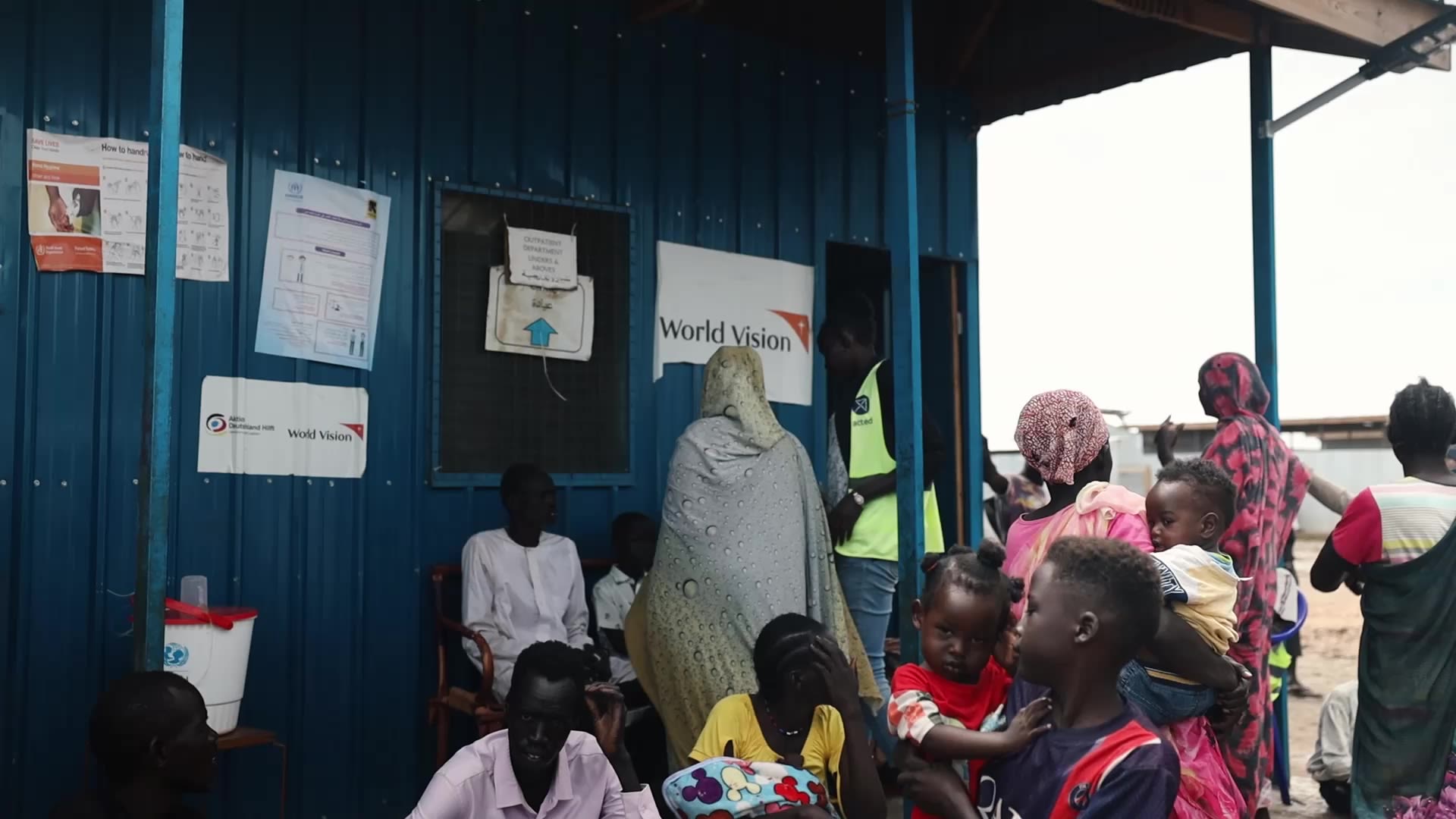
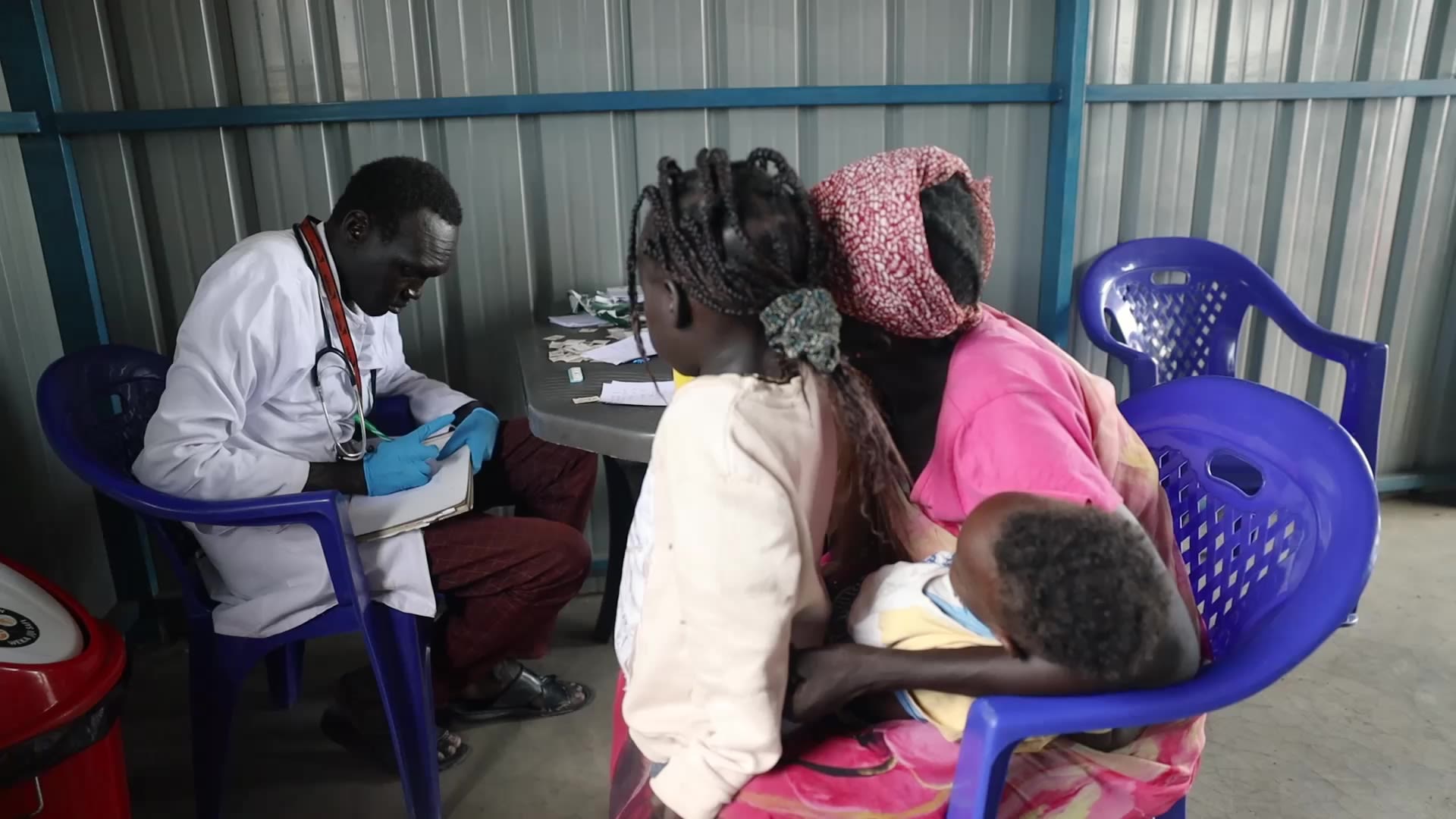
At the busy World Vision health clinic in the Renk Transit Centre, doctors and nurses are performing test after test for malaria.
“My concern is that there are a number of diseases that will increase, especially the number of malaria cases."
“Children will be exposed to cold weather, most children will be experiencing a lot of respiratory infections,” World Vision South Sudan's Dr James Tut said.
“The environment isn’t clean, there will be an increase in diarrhoea, eye and skin infections."
Across the border, the World Health Organisation says most of Sudan’s 18 states are experiencing outbreaks of three or more diseases simultaneously.
Many of the country’s health facilities aren’t operational, with Medecins Sans Frontieres warning that hospitals have been damaged by airstrikes and looting.
South Sudan’s healthcare system is under considerable strain from the increased population, with other neighbouring countries also struggling under the larger caseload.
But health services must carry on, especially for vulnerable groups like pregnant women who have fled Sudan.
Several babies can be born each day at the maternity centre at Renk Transit Centre’s health clinic.
Midwife Paula Atimango is at the coalface of this effort, delivering babies and treating sick mothers.
“Some of these women walked for more than 14 days, more than a month,” she said.
“They come in when they are really tired, they are really sick, they are anxious and don’t know how their babies are doing.”
“Some of them come with infections, malaria and they can have premature labour because of these infections.”
Workers on the frontlines of this spiralling crisis are exhausted.
“Every day we are working, we don’t have a break to see that people get the services they need.”
“You really see how people are suffering, people give birth in latrines, people give birth in bushes.”
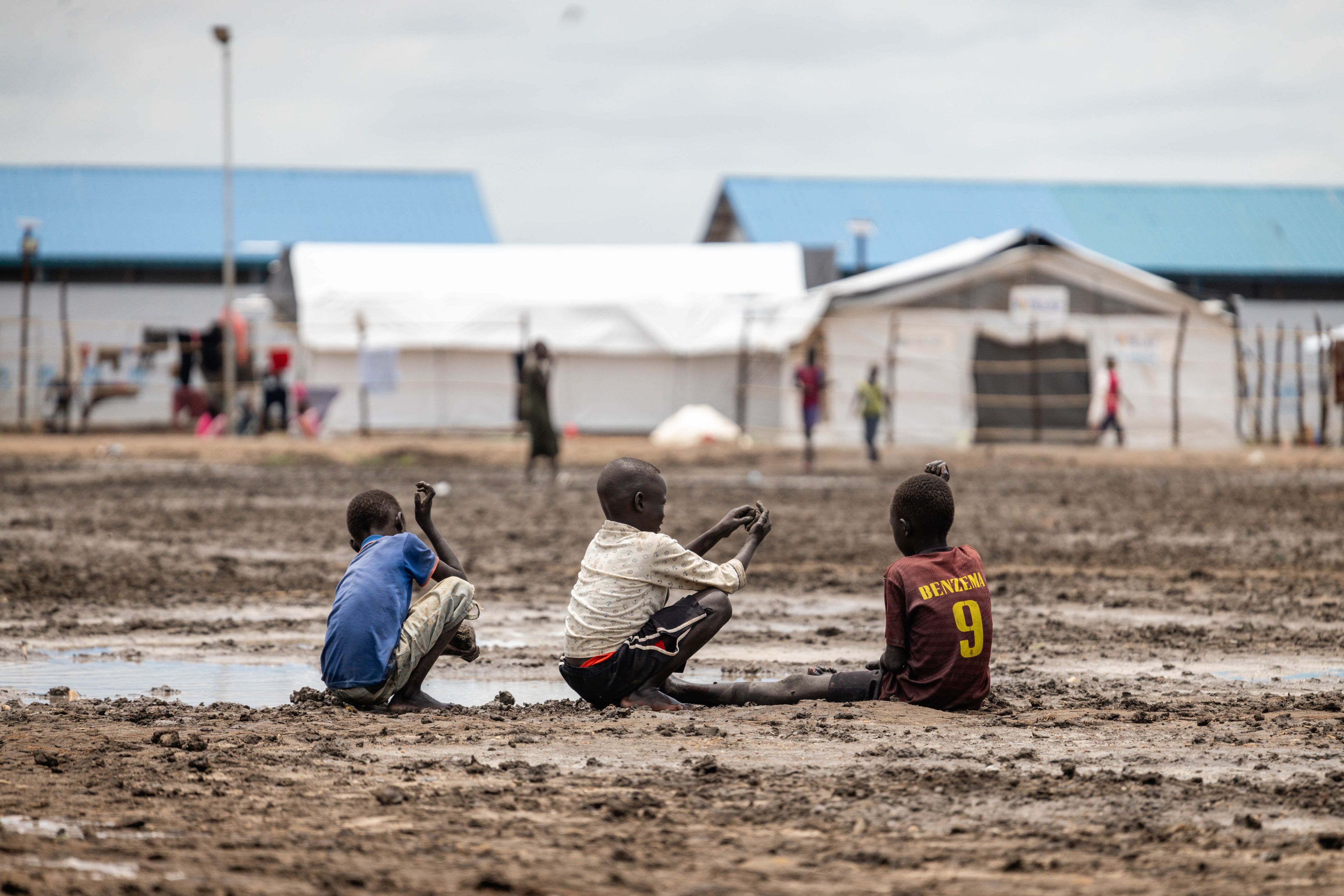
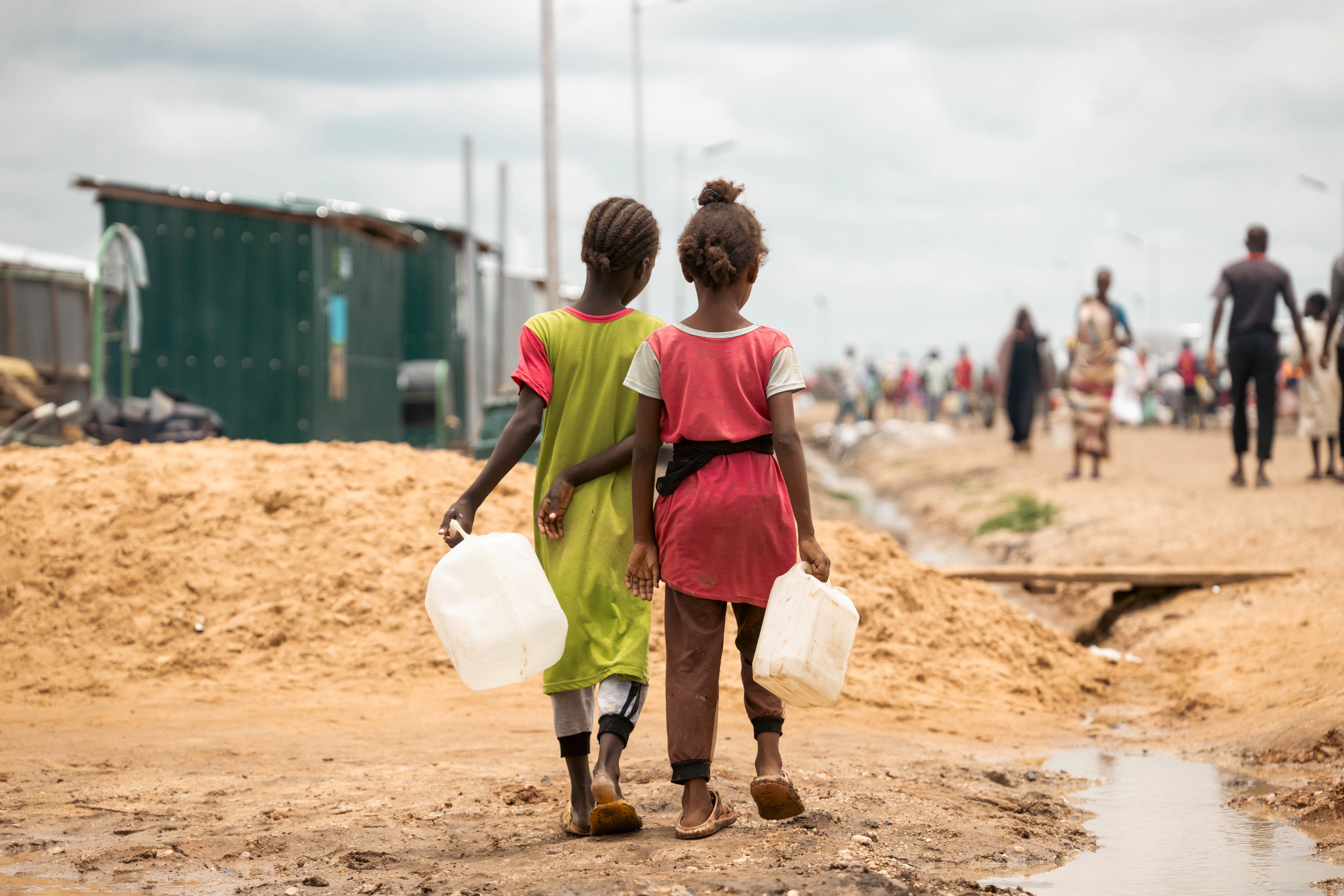
The generational impact of this conflict will be immense, with rampant hunger, displacement and widespread school closures taking an enormous toll on the children of Sudan.
UNICEF estimates 19 million children are out of school as fighting has spread to most of Sudan’s states.
Schools are being used as emergency shelters for displaced people.
The agency warns that 24 million children are on the brink of a “generational catastrophe”.
More than eight million people, many of them children, are facing emergency levels of hunger, with famine-like conditions found in a displacement camp in North Darfur.
14-year-old Nayma is just one of the millions of children displaced because of the violence.
She and her family are seeking refuge at the Renk Transit Centre.
“There’s no school and to get food to eat, it’s very difficult,” she said.
“I mostly stay here in the shelter, I don’t have friends here ... I don’t go and play with anybody.”
“I hate this place, there’s too many people.”
“The shelters are full of people, so when it rains there is nowhere we can go and hide.”
The threat of gender-based violence in Sudan also looms large, with UNFPA estimating that 6.7m people, mostly women and girls, at risk.
Survivors are as young as nine, with displacement camps and asylum journeys presenting high risks of sexual violence.
Regina was living in a displacement camp in Sudan for seven years after fleeing conflict at home in South Sudan.
She said conditions at the camp were getting worse during the conflict and she faced the threat of sexual violence.
“We didn’t have clean water to drink, we didn’t have soap to wash our clothes, we didn’t have shelter.”
“When we went to the bush to collect firewood, men would try and force us to have sex.”
She is separated from her husband, who wants to flee to Sudan but said he is finding it challenging to make it through checkpoints to travel south.
Despite the horrors faced by those in Sudan and those who have fled, the international response to the crisis is underfunded.
Only 41 per cent of the funding needed to respond to the crisis has been received.
INGOs are similarly underfunded in responding to South Sudan’s own humanitarian needs.
The needs in the region are vast, and although some aid is flowing across country borders to Sudan, unimpeded humanitarian access is needed for a response at scale.
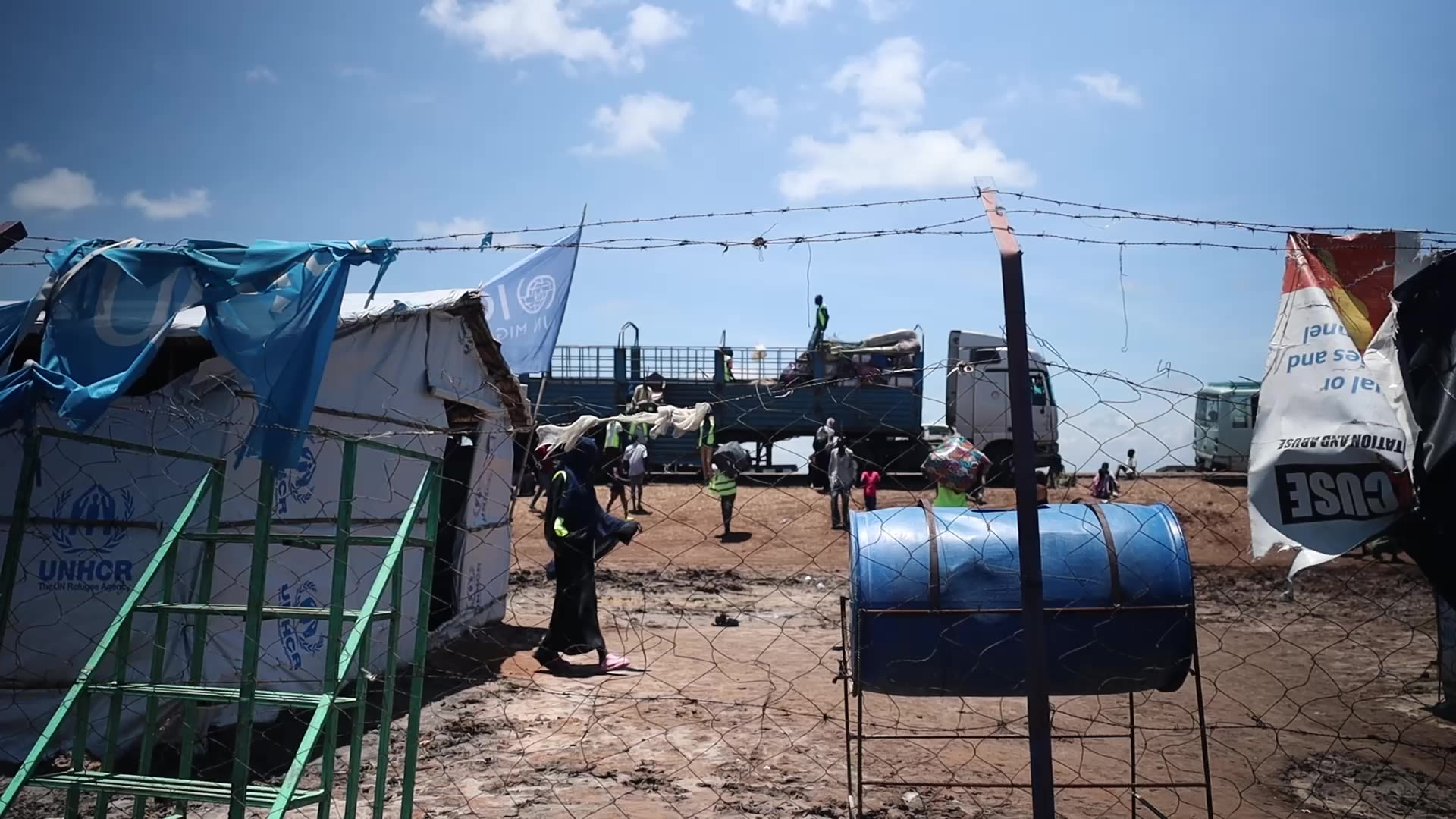
Left to continue, this situation threatens to overwhelm the entire East Africa region and beyond.
The opportunity to turn the tide on this humanitarian crisis is rapidly closing.
World Vision is one of the largest humanitarian agencies in Sudan, having worked there for decades. Since the conflict escalated in 2023, World Vision has reached more than 1.8 million people, mostly women and children, with emergency assistance, including health and nutrition services and water, sanitation and hygiene solutions.
